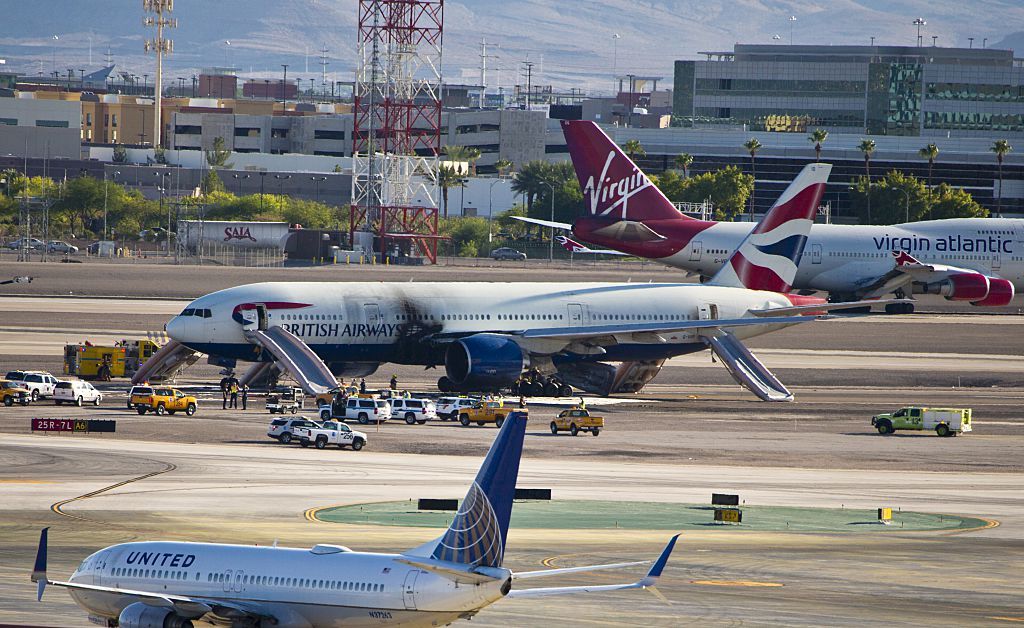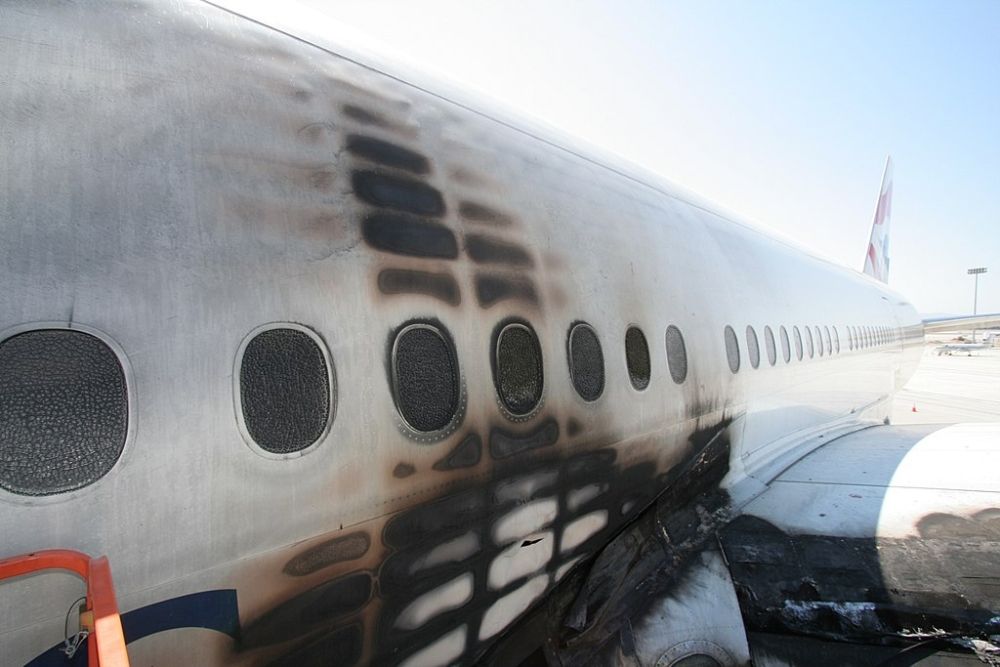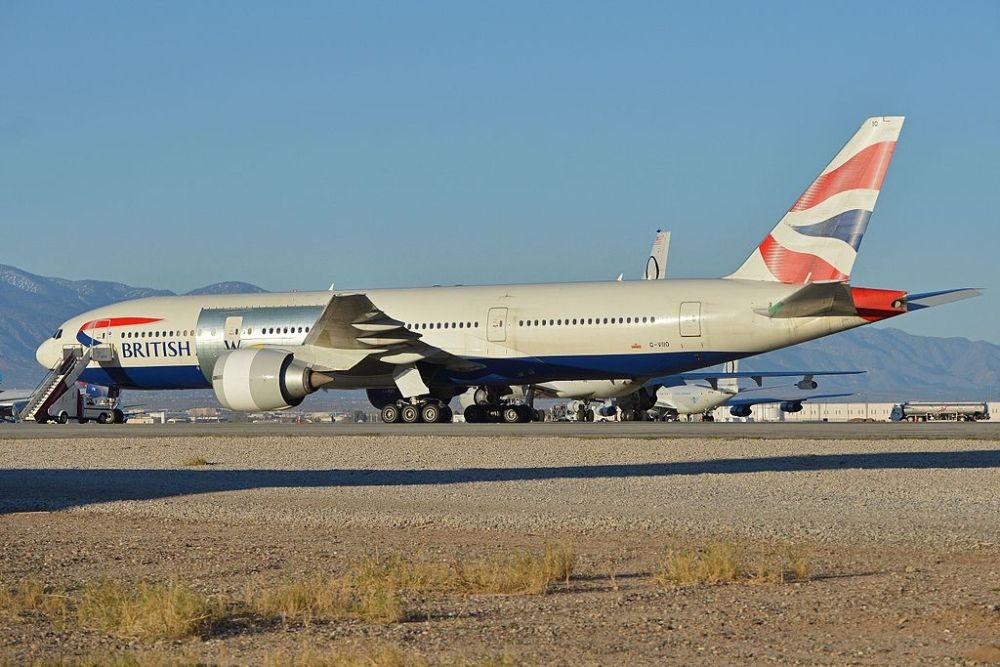In September 2015, a British Airways Boeing 777-200ER registered as G-VIIO experienced an engine fire in Las Vegas, Nevada. The crew were able to abort its departure, and all of the 777's occupants escaped the burning aircraft. But what happened to G-VIIO after the incident? Let's take a look at the history of this twin-engine widebody aircraft.
The flight in question
British Airways flight BA2276 was a scheduled long-haul service that originated in Las Vegas, Nevada. Its destination was London Gatwick, the UK capital's second-largest airport. On September 8th, 2015, the aircraft operating the flight was G-VIIO, a Boeing 777-200ER that had been at BA for its entire career. There were 157 passengers and 13 crew onboard.
The flight pushed back from its gate at 15:53 local time. Within 20 minutes, it was reading to depart on its long westbound journey back to the UK. G-VIIO began its takeoff roll at 16:12, but never made it into the air. At a speed of around140 km/h (78 knots), the flight's captain elected to abort the takeoff after the jet experienced a 'catastrophic' engine failure.
This was a safe speed at which to abort the takeoff, and the jet came to a stop on the runway. The uncontained nature of the engine failure in question caused a fire in the 777's left engine, prompting an evacuation. All 170 people onboard the plane escaped, although 20 were injured in the evacuation (one seriously). But what happened to the aircraft?
A lengthy repair process
As seen in the photograph above, G-VIIO's fuselage near the left engine was badly burned. This was due to the fact that, once the aircraft came to a stop, winds in the area blew the fire towards the body of the plane. The result of this was significant structural damage to the aircraft, albeit in a fairly localized fashion. The fire also damaged the engine and cargo hold.
After three months on the ground in Las Vegas, a Boeing team deemed that G-VIIO was repairable. The necessary fix took place in February 2016, after which the aircraft flew to Victorville, California for further repairs, and a repaint of the damaged area. It eventually flew back to London Gatwick a month later via a C-check in Cardiff.
Stay informed: Sign up for our daily and weekly aviation news digests.
Still in service today
According to data from ch-aviation.com, G-VIIO's first flight took place on January 18th, 1999. It was delivered to BA later that month, making it just under 18 years old at the time of the fire in Las Vegas. With the plane deemed repairable, it had a few more years left in the tank, with ch-aviation noting that its minimum retirement date is set for 2025.
As such, G-VIIO remains in active service today. Data from ATDB.aero shows that it returned to action with BA on March 26th, 2016. Taking a quick look at RadarBox.com, we can see that G-VIIO is typically deployed on leisure-centric routes from Gatwick to the Caribbean. At the time of writing, it was airborne and heading for Punta Cana in the Dominican Republic.
What are your memories of this incident? Have you ever flown on one of British Airways' Boeing 777s? Let us know your thoughts and experiences in the comments!



